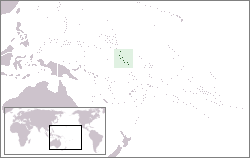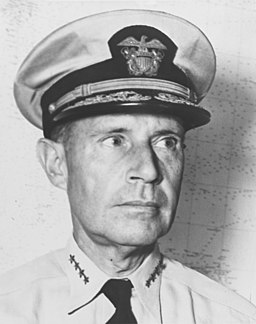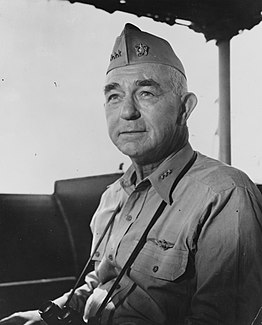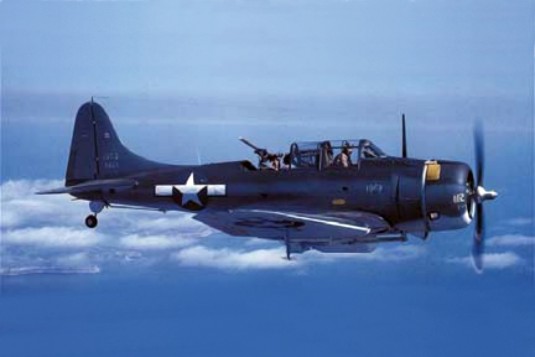
The Battle of Midway was a decisive naval battle in the Pacific Theater of World War II that took place between 4 and 7 June 1942, only six months after Japan's attack on Pearl Harbor and one month after the Battle of the Coral Sea. The United States Navy under Admirals Chester Nimitz, Frank Jack Fletcher, and Raymond A. Spruance defeated an attacking fleet of the Imperial Japanese Navy under Admirals Isoroku Yamamoto, Chūichi Nagumo, and Nobutake Kondō near Midway Atoll, inflicting devastating damage on the Japanese fleet that proved irreparable. Military historian John Keegan called it "the most stunning and decisive blow in the history of naval warfare".

USS Yorktown (CV-5) was an aircraft carrier commissioned in the United States Navy from 1937 until she was sunk at the Battle of Midway in June 1942. She was named after the Battle of Yorktown in 1781 and the lead ship of the Yorktown class which was designed after lessons learned from operations with the large converted battlecruiser Lexington class and the smaller purpose-built USS Ranger. She was sunk by Japanese submarine I-68 on 6 June 1942 during the Battle of Midway.

USS Saratoga (CV-3) was a Lexington-class aircraft carrier built for the United States Navy during the 1920s. Originally designed as a battlecruiser, she was converted into one of the Navy's first aircraft carriers during construction to comply with the Washington Naval Treaty of 1922. The ship entered service in 1928 and was assigned to the Pacific Fleet for her entire career. Saratoga and her sister ship, Lexington, were used to develop and refine carrier tactics in a series of annual exercises before World War II. On more than one occasion these exercises included successful surprise attacks on Pearl Harbor, Hawaii. She was one of three prewar US fleet aircraft carriers, along with Enterprise and Ranger, to serve throughout World War II.

USS Wasp (CV-7) was a United States Navy aircraft carrier commissioned in 1940 and lost in action in 1942. She was the eighth ship named USS Wasp, and the sole ship of a class built to use up the remaining tonnage allowed to the U.S. for aircraft carriers under the treaties of the time. As a reduced-size version of the Yorktown-class aircraft carrier hull, Wasp was more vulnerable than other United States aircraft carriers available at the opening of hostilities. Wasp was initially employed in the Atlantic campaign, where Axis naval forces were perceived as less capable of inflicting decisive damage. After supporting the occupation of Iceland in 1941, Wasp joined the British Home Fleet in April 1942 and twice ferried British fighter aircraft to Malta.

The Battle of the Santa Cruz Islands, fought during 25–27 October 1942, sometimes referred to as the Battle of Santa Cruz or in Japan as the Battle of the South Pacific, was the fourth carrier battle of the Pacific campaign of World War II. It was also the fourth major naval engagement fought between the United States Navy and the Imperial Japanese Navy during the lengthy and strategically important Guadalcanal campaign. As in the battles of Coral Sea, Midway, and the Eastern Solomons, the ships of the two adversaries were rarely in sight or gun range of each other. Instead, almost all attacks by both sides were mounted by carrier- or land-based aircraft.
This is the order of battle for the World War II Battle of Midway.

Operation Cockpit was a bombing raid by aircraft from two Allied naval forces on 19 April 1944. The targets were Japanese port and oil facilities on Sabang Island.

Maya (摩耶) was one of four Takao-class heavy cruisers, active in World War II with the Imperial Japanese Navy (IJN). These were the largest and most modern cruisers in the Japanese fleet, and were intended to form the backbone of a multipurpose long-range strike force. These ships were fast, powerful and heavily armed, with enough firepower to hold their own against any cruiser in any other navy in the world. Her sister ships were Takao, Atago and Chōkai.

Nagara (長良) was the lead ship of her class of light cruiser in the Imperial Japanese Navy. She was named after the Nagara River in the Chūbu region of Japan.

Kinugasa was the second vessel in the two-vessel Aoba class of heavy cruisers in the Imperial Japanese Navy. The ship was named after Mount Kinugasa, located in Yokosuka, Kanagawa, Japan.

Isuzu (五十鈴) was the second of six vessels in the Nagara class of light cruisers, and like other vessels of her class, she was intended for use as the flagship of a destroyer flotilla. She was named after the Isuzu River, near Ise Shrine in the Chūbu region of Japan. She saw action during World War II in the Battle of Hong Kong and in the Solomon Islands campaign, and the Battle of Leyte Gulf before being sunk by American submarines in the Netherlands East Indies in April 1945.

Katori (香取) was the lead ship of the Katori class of three light cruisers which served with the Imperial Japanese Navy during World War II. The ship was named after the noted Shinto Katori Shrine in Chiba prefecture, Japan.

Zuihō was a light aircraft carrier of the Imperial Japanese Navy. Originally laid down as the submarine support ship Takasaki, she was renamed and converted while under construction into an aircraft carrier. The ship was completed during the first year of World War II and participated in many operations. Zuihō played a secondary role in the Battle of Midway in mid-1942 and did not engage any American aircraft or ships during the battle. The ship participated in the Guadalcanal Campaign during the rest of 1942. She received significant damage during the Battle of the Santa Cruz Islands during this campaign and covered the evacuation of Japanese forces from the island in early 1943 after repairs.
Axis & Allies Naval Miniatures: War At Sea is a standalone miniature wargame, produced by Wizards of the Coast. Axis and Allies Naval Miniatures gameplay is similar to that of its sister game, Axis & Allies Miniatures, but the player takes command of Ships, Submarines, and squadrons of Aircraft.

The Battle of Leyte Gulf, generally considered to be the largest naval combat in history, was fought 24-25 October 1944 in the waters of the Philippine Islands by elements of the Imperial Japanese Navy's Combined Fleet and the United States Navy's Pacific Fleet. Of the five separate engagements that made up the battle as a whole, the forces involved in the three principal ones are listed here.

The Battle of the Philippine Sea was fought 19-20 June 1944 in the waters west of the Mariana Islands by elements of the Imperial Japanese Navy's Combined Fleet and of the United States Navy's Pacific Fleet. The battle exacted a terrible toll from the Japanese naval air arm, costing them most of their few remaining experienced pilots. The Combined Fleet was no longer capable of serious offensive operations after this engagement. Historian Samuel Eliot Morison characterized it this way:
This was the greatest carrier battle of the war. The forces engaged were three to four times those in preceding actions like Midway, and victory was so complete that the Japanese could never again engage on such a scale. ... above all the skill, initiative, and intrepid courage of the young aviators made this day one of the high points in the history of the American spirit.
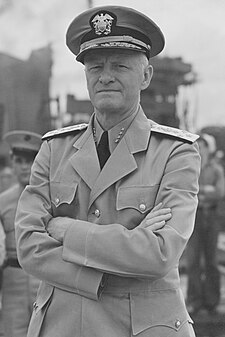
For the April 1945 invasion of Okinawa, the Allies assembled the most powerful naval force in history. Since the few remaining capital ships of the Imperial Japanese Combined Fleet had been sunk or otherwise put out of action at the Battle of Leyte Gulf, the Allies were effectively unopposed in terms of surface vessels; a single, essentially suicidal, mission consisting of the superbattleship Yamato and a few escorts was undertaken, but the task force did not get within 200 nautical miles of the invasion area.
On 7 August 1942, US and Australian naval forces undertook the invasion of the Japanese-held islands of Guadalcanal and Tulagi in the lower Solomon Islands chain, the first Allied offensive in the Pacific Theatre. The landing of the US 1st Marine Division on the beaches of Savo Sound began the unexpectedly long and extremely arduous Guadalcanal Campaign, lasting officially until 9 February 1943.

The Battle of the Eastern Solomons was fought August 23-25, 1942 in the waters east and northeast of the Solomon Islands by forces of the Imperial Japanese Navy's Combined Fleet and the US Navy's Pacific Fleet. The battle resulted from a major effort by the Japanese to reinforce their troop strength on the island of Guadalcanal. The Japanese high command had realized this reinforcement was necessary following the annihilation of the Ichiki Detachment by the 1st Marines a few days earlier.

Operation Avalanche was the codename for the combined US and British landings on the southwest coast of Italy on 9 September 1943 as part of the Allied effort in the Mediterranean Theater during World War II. The forces landed consisted of the US Fifth Army under Lieutenant General Mark W. Clark. The Fifth Army was made up of the British X Corps, which landed south of the town of Salerno, and the US VI Corps, which landed at the town of Paestum.
